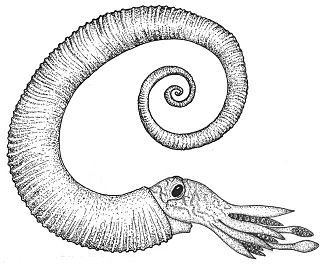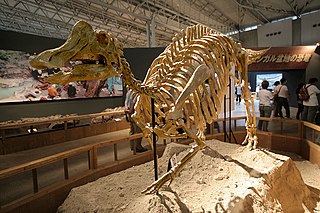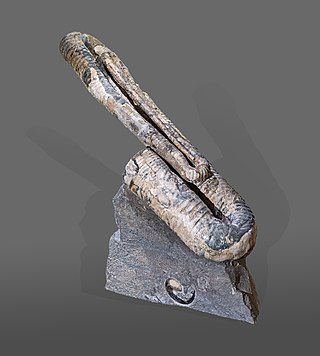
The Sea of Okhotsk is a marginal sea of the western Pacific Ocean. It is located between Russia's Kamchatka Peninsula on the east, the Kuril Islands on the southeast, Japan's island of Hokkaido on the south, the island of Sakhalin along the west, and a stretch of eastern Siberian coast along the west and north. The northeast corner is the Shelikhov Gulf. The sea is named after the Okhota river, which in turn named after the Even word окат meaning "river".

Sakhalin is the largest island of Russia. It is north of the Japanese archipelago, and is administered as part of the Sakhalin Oblast. Sakhalin is situated in the Pacific Ocean, sandwiched between the Sea of Okhotsk to the east and the Sea of Japan to the west. It is located just off Khabarovsk Krai, and is north of Hokkaido in Japan. The island has a population of roughly 500,000, the majority of which are Russians. The indigenous peoples of the island are the Ainu, Oroks, and Nivkhs, who are now present in very small numbers.

Ammonoids are a group of extinct marine mollusc animals in the subclass Ammonoidea of the class Cephalopoda. These molluscs, commonly referred to as ammonites, are more closely related to living coleoids than they are to shelled nautiloids such as the living Nautilus species. The earliest ammonites appeared during the Devonian, with the last species vanishing during the Cretaceous–Paleogene extinction event.

Shikotan, also known as Shpanberg, is an island in the Kurils administered by the Russian Federation as part of Yuzhno-Kurilsky District of Sakhalin Oblast. It is claimed by Japan as the nominal Shikotan District, part of Nemuro Subprefecture of Hokkaido Prefecture.

The Ancyloceratina were a diverse suborder of ammonite most closely related to the ammonites of order Lytoceratina. They evolved during the Late Jurassic but were not very common until the Cretaceous period, when they rapidly diversified and became one of the most distinctive components of Cretaceous marine faunas. They have been recorded from every continent and many are used as zonal or index fossils. The most distinctive feature of the majority of the Ancyloceratina is the tendency for most of them to have shells that are not regular spirals like most other ammonites. These irregularly-coiled ammonites are called heteromorph ammonites, in contrast to regularly coiled ammonites, which are called homomorph ammonites.
In the geologic timescale, the Valanginian is an age or stage of the Early or Lower Cretaceous. It spans between 139.8 ± 3.0 Ma and 132.9 ± 2.0 Ma. The Valanginian Stage succeeds the Berriasian Stage of the Lower Cretaceous and precedes the Hauterivian Stage of the Lower Cretaceous.
The Campanian is the fifth of six ages of the Late Cretaceous Epoch on the geologic timescale of the International Commission on Stratigraphy (ICS). In chronostratigraphy, it is the fifth of six stages in the Upper Cretaceous Series. Campanian spans the time from 83.6 to 72.1 million years ago. It is preceded by the Santonian and it is followed by the Maastrichtian.
The Hauterivian is, in the geologic timescale, an age in the Early Cretaceous Epoch or a stage in the Lower Cretaceous Series. It spans the time between 132.9 ± 2 Ma and 129.4 ± 1.5 Ma. The Hauterivian is preceded by the Valanginian and succeeded by the Barremian.

Nipponosaurus is a lambeosaurine hadrosaur from sediments of the Yezo Group, in Sinegorsk on the island of Sakhalin, which was part of Japan at the time of the species' classification. The type and only species is N. sachalinensis, known only from a single juvenile specimen discovered in 1934 and named in 1936, by Takumi Nagao, with further material of the same individual found in 1937. Since then, the taxon has been largely ignored, and its validity has been doubted, with synonymy with other Asian hadrosaurs or status as a nomen dubium being suggested. Redescriptions from 2004 and 2017, however, have supported recognition as a distinct species. Dating the only specimen has been difficult, but based on associated mollusc taxa, the species likely lived sometime in the upper Santonian or lower Campanian, around 80 million years ago.
Anagaudryceras is an extinct genus of ammonite from the later Cretaceous belonging to the Ammonoidea family Gaudryceratidae. Anagaudryceras has a moderately involute shell with a deep umbilicus and strongly ribbed outer whorl. Ribs are thick and rounded and cross over the venter uninterrupted.
Yezoites is an extinct genus of ammonites placed in the family Scaphitidae. The genus is known lived during the Upper Cretaceous and was first described in 1910. The genus contains five species, Y. bladenensis, Y. orbignyi, Y. planus, Y. puerculus, and Y. subevolutus.
Utaturiceras is an upper Cretaceous (Cenomanian) ammonitid belonging to the family Acanthoceratidae and subfamily Mantelliceratinae.

Nipponites is an extinct genus of heteromorph ammonites. The shells of Nipponites form "ox-bow" bends, resulting in some of the most bizarre shapes seen among ammonites.

Polyptychoceras is an extinct genus of ammonites from the Late Cretaceous of Asia, Europe, and North and South America. It was first named by Hisakatsu Yabe in 1927.
The Yezo Group is a stratigraphic group in Hokkaido, Japan and Sakhalin, Russia which is primarily Late Cretaceous in age. It is exposed as roughly north–south trending belt extending 1,500 kilometres through central Hokkaido from Urakawa to Cape Sōya and Sakhalin from the south coast to Alexandrovsk-Sakhalinsky District. It consists of marine forearc basin sediments, typically turbiditic and bioturbated mudstones and sandstones with subordinate conglomerate primarily deposited on the continental shelf and slope of the ancient Yezo subduction margin. It forms a continuous depositional sequence with the Sorachi Group, which overlies the Horokanai Ophiolite. The sequence gradually shallows upwards with the terminal Hakobuchi Formation representing a fluvial-inner shelf environment.

The Santa Marta Formation is a geologic formation in Antarctica. It, along with the Hanson Formation and the Snow Hill Island Formation, are the only formations yet known on the continent where dinosaur fossils have been found. The formation outcrops on James Ross Island off the coast of the northern tip of the Antarctic Peninsula. In its entirety, the Santa Marta Formation is on average one kilometer thick.
Sakhalin Ainu is an extinct Ainu language, or perhaps several Ainu languages, that was or were spoken on the island of Sakhalin, now part of Russia.
The Hakobuchi Formation is a geological formation in Hokkaido, Japan. It is the uppermost unit of the Yezo Group, being early Maastrichtian in age. It consists of bioturbated glauconitic sandstones, siltstones and conglomerates with coaly mudstone and minor tuffite. It was deposited in a continental shelf setting. It is noted for its fossil content with the invertebrates mainly consisting of bivalves and ammonites. With vertebrates including the mosasaurs Mosasaurus hobetsuensis and Phosphorosaurus ponpetelegans. As well the sea turtle Mesodermochelys and the hadrosaurid dinosaur Kamuysaurus.

The Ainu languages, sometimes known as Ainuic, are a small language family, often regarded as a language isolate, historically spoken by the Ainu people of northern Japan and neighboring islands.
Clioscaphites is an extinct genus of ammonite belonging to the family Scaphitidae. Species in this genus are important index fossils of the Western Interior Seaway of the Coniacian to Santonian Ages of the Cretaceous.









